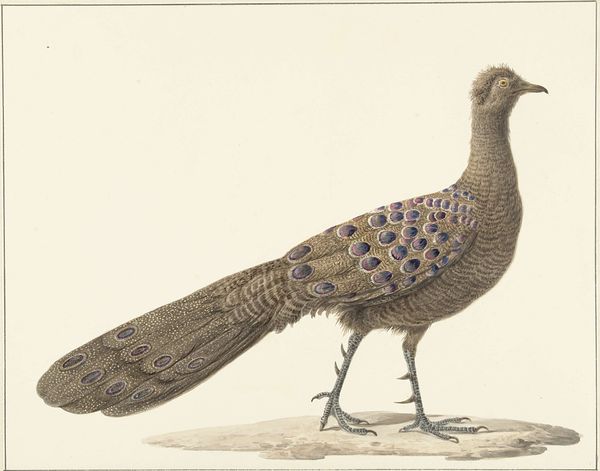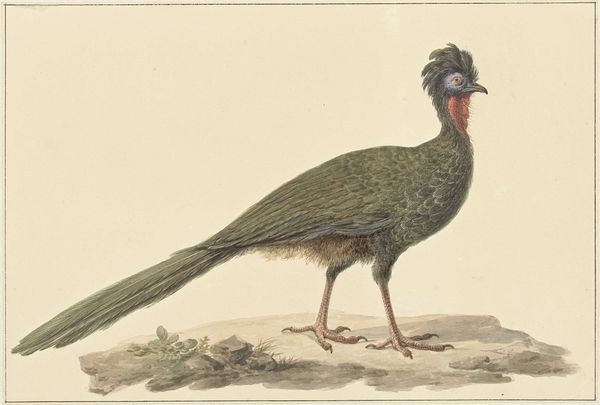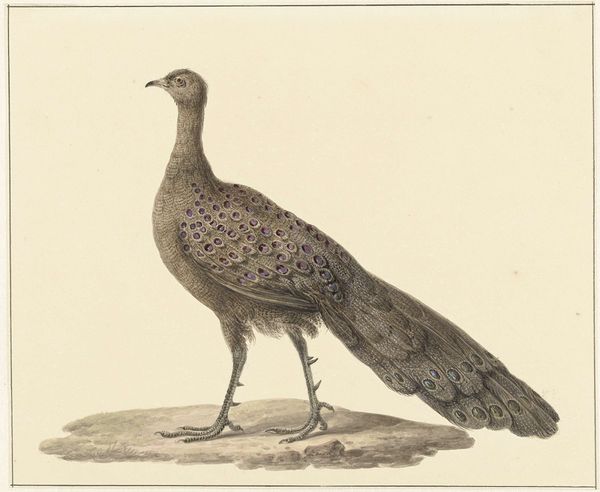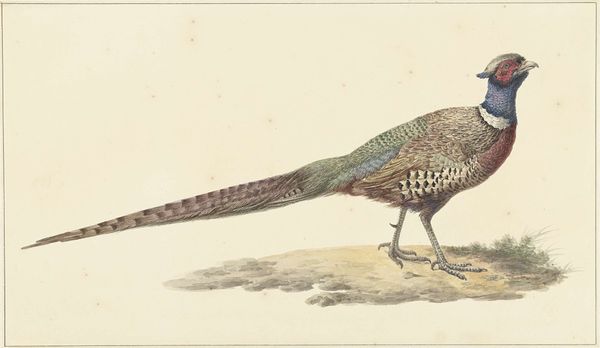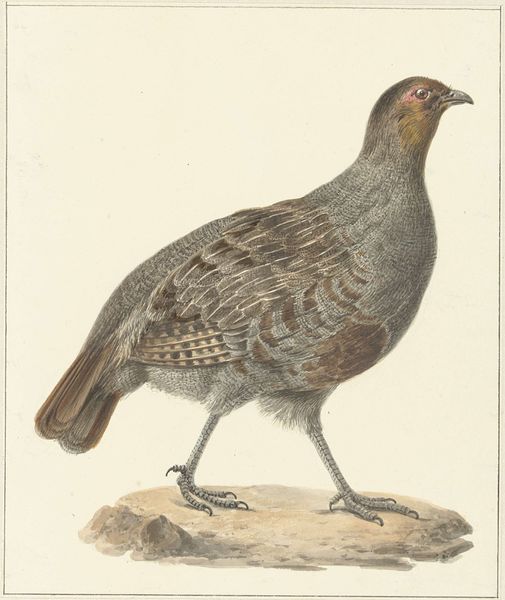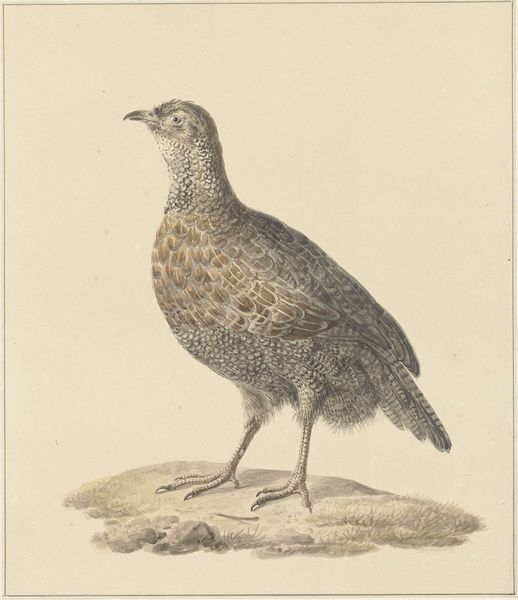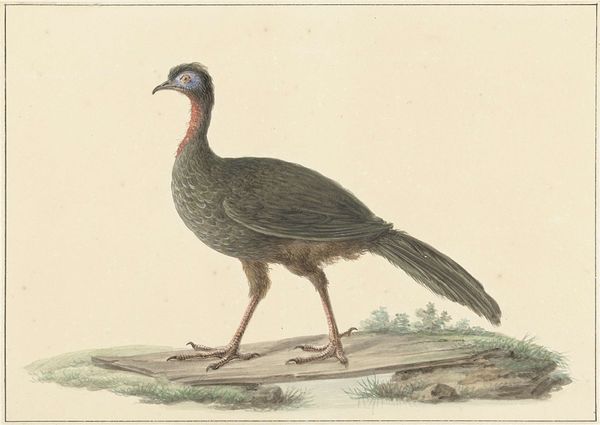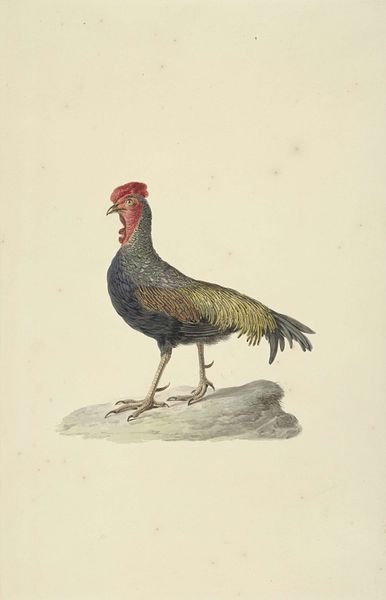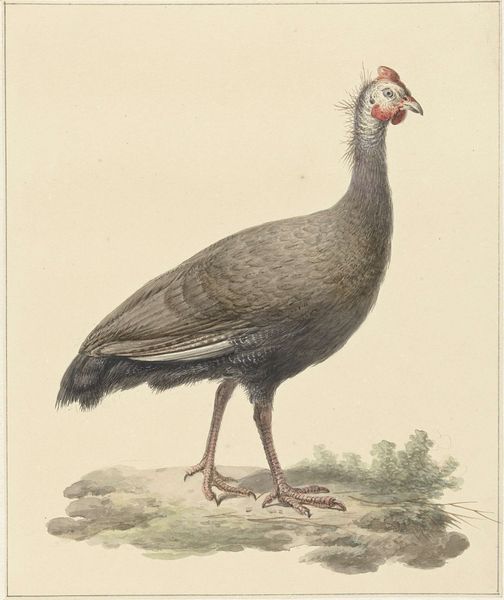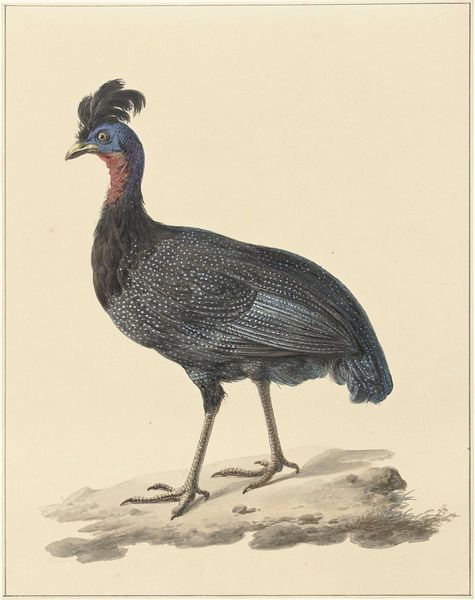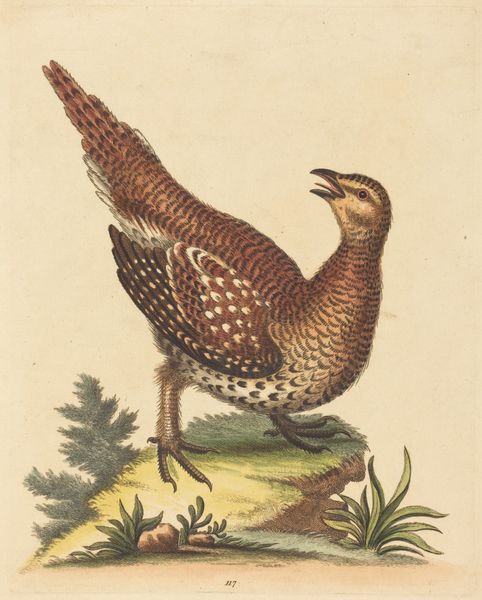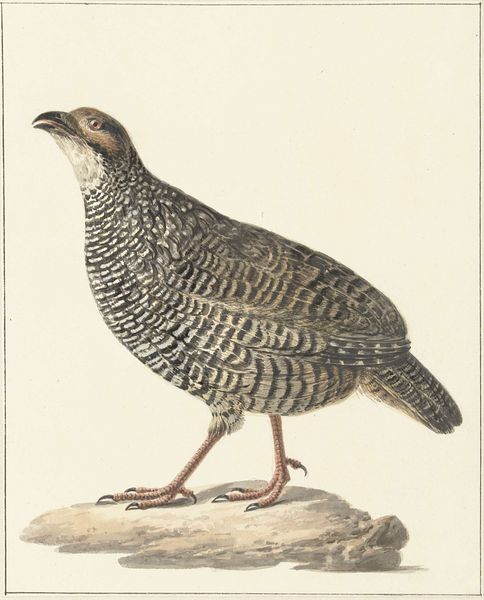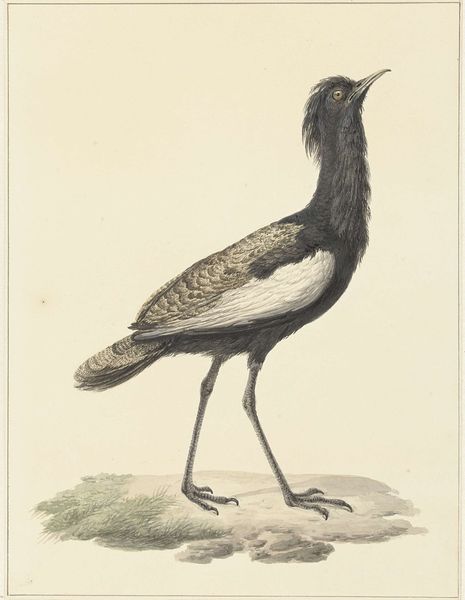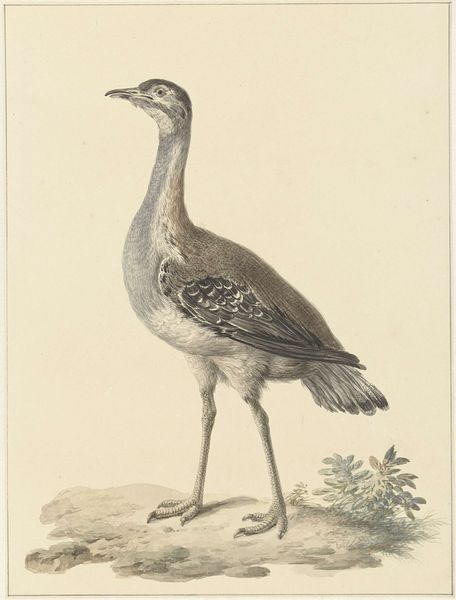
drawing, watercolor
#
portrait
#
drawing
#
watercolor
#
watercolour illustration
#
botanical art
#
watercolor
#
realism
Dimensions: height 309 mm, width 251 mm
Copyright: Rijks Museum: Open Domain
Editor: This is "Jachtfazant," or "Hunting Pheasant," a watercolor drawing by Pieter Pietersz. Barbiers, created sometime between 1759 and 1842. It feels very scientific and precise, almost like a page from a naturalist's notebook. What stands out to you? Curator: The pheasant itself is so clearly the focal point, rendered with a detail that almost elevates it beyond simple observation. Do you see the symbolic weight placed on birds throughout art history? Editor: Birds as symbols of freedom, maybe? Curator: Precisely, but more. Think about heraldry – the eagle representing empires. Or consider birds in religious iconography – doves, for instance. Barbiers gives us a single pheasant, perched on a truncated branch, almost a king on a diminished throne. What do you make of that contrast? Editor: So the pheasant might represent a kind of nobility brought low? I hadn't considered the implications of the branch. Curator: The detail in the feathers - the repetitive patterns creating that almost shimmering texture - mimics a kind of royal tapestry or brocade. The truncation suggests loss, a cutting short of power. This piece resonates with broader social anxieties and shifting hierarchies of the time. The detail immortalizes not just a specimen but cultural perceptions. Editor: It's amazing how much symbolic information can be packed into what initially seemed like a simple study of a bird. Curator: Exactly! Even seemingly objective portrayals carry within them layers of cultural meaning and historical weight. Considering how these layers accumulate, like sediment, helps us interpret how an image can continue to resonate across centuries. Editor: I'll definitely be thinking about visual symbolism much differently now!
Comments
No comments
Be the first to comment and join the conversation on the ultimate creative platform.
